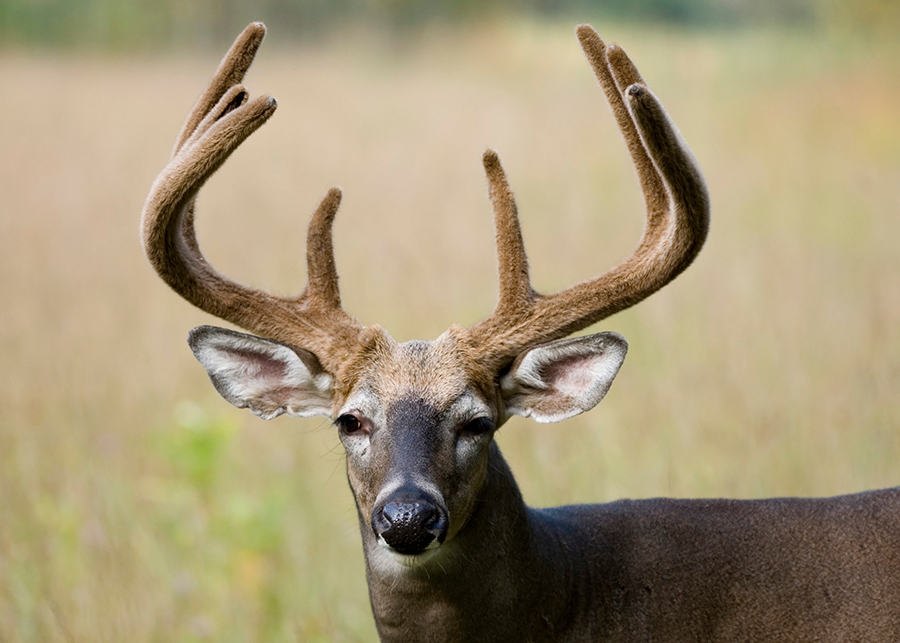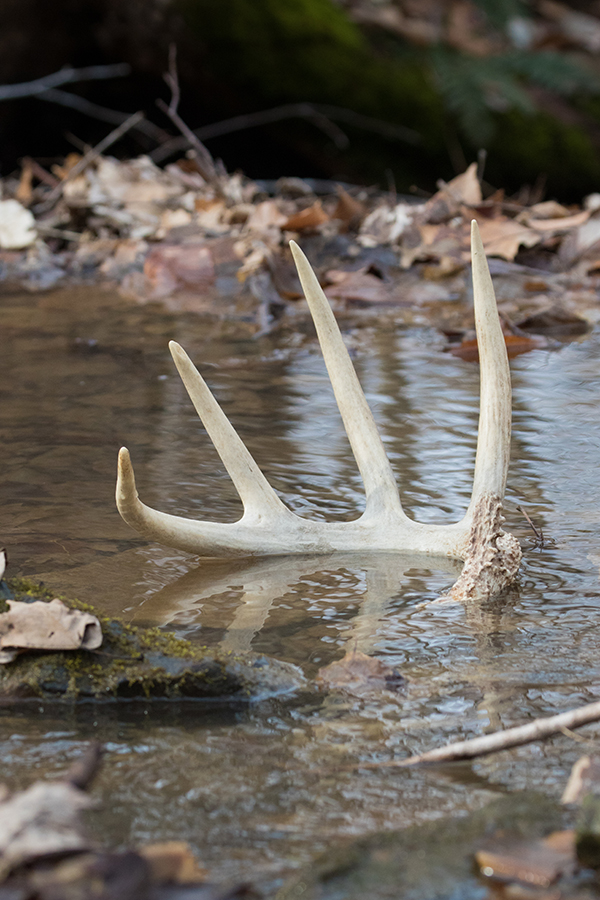UNDERSTANDING ANTLER DEVELOPMENT

A solid understanding of the “mystery” of antler growth is key to producing the shooter bucks you’re looking for next fall. While we can visibly see antlers growing in the spring and summer, don’t assume those are the only important months of growth. Antlers grow in an annual cycle that requires optimal nutrition year-round for a buck to reach his full potential.
The Antler Cycle
Digging deeper into antler development, we know the yearly cycle of growing and shedding antlers begins in early spring with pedicle development and ending in late winter when antlers drop off.
This whole process is governed by hormones and response to the “photo period” or the length of daytime hours as the seasons change. As days get longer in the spring, the brain signals a change in hormones, increasing the amount of testosterone and triggering the start of antler growth. Testosterone levels continue to increase, peaking during the rut and then falling off rapidly resulting in shedding antlers. This timing allows bucks to quickly start refueling and recovering after the rut to prepare for that new set of antlers coming in the spring.

The Growth Process
The physical process of growth happens at the antler tips. Blood circulates up through the pedicle creating a semi-soft tissue covered in a thick skin of velvet. Throughout the growing season, the velvet provides for the flow of blood and nutrients to support antler development. During this growing period, antlers are only about 20% dry matter. This will increase to about 60% dry matter as antlers harden and mature.
Brow-tines and forks are typically the first to appear, usually visible by late spring. As summer hits, we see a major spike in antler growth and most points are noticeable. Bucks in good health with adequate nutrition can add a half inch or more of growth in a single day during this period. Final inches of tines are added toward the end of the summer before bucks start shedding velvet in early fall. Mature antlers will remain through the rut and into late winter when they are shed and the process begins again.
The Role of Nutrition
Aside from understanding the basic cycle of antler growth, it’s important to remember that bucks will always add body condition before utilizing nutrients for antler growth. When looking at the growth cycle and the timing of each stage, it’s easy to see that nutrition becomes a critical factor all year long.
The nutrition process really begins immediately following the rut, as this is when bucks are recovering and packing on the pounds for the winter. If nutritional needs aren’t met and body condition fails, those bucks will have to regain that body condition in the spring before they can begin their antler growth, putting them behind the curve to be at max growth in the fall. Providing supplemental energy is crucial during these months. Rack Revolution Magnify is a great choice with much higher energy content than other pelleted feeds to help meet those maintenance requirements sooner.
Throughout the spring and summer, the nutrition game is about filling gaps in the natural browse and keeping the deer healthy. Supplementing protein and energy will support growth, but Rack Revolution Magnify also provides necessary minerals for overall health, as well as natural digestion aids to maximize utilization of the native forage. Additionally, Magnify includes essential oils and diatomaceous earth to help with parasite insect control.

It’s All in the Cycles
While the antler cycle can give you some clues on the most important time period for your male deer, don’t forget to pay attention to the growth and reproductive cycles of fawns and does. Fawns won’t begin antler growth until about 10 moths of age, but their nutrition up to that point plays a major role in their ability to thrive and grow. To raise and wean a healthy fawn, does must meet huge nutritional requirements during pregnancy and lactation. Understanding how all of these cycles work together will not only make you a more educated manager, but also a more succesful one.
